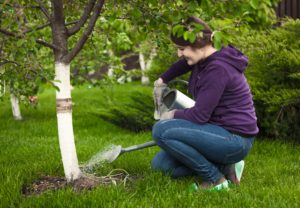Moss is pretty and can add a certain element of antiquity to homes, buildings, statues, and more. But many homeowners are not happy with moss growing on their beloved landscaping trees. After all, moss can be problematic for trees and other flora. Continue reading to learn more about the effects of moss growth and how to stop it from happening to your trees.
Moss Removal
Moss can put too much weight on old or weak trees, damaging them overtime; while moss on healthy trees wont necessarily damage the tree, but it will attract a lot of unwanted nuisance wildlife that can. One of the best tools for removing moss from trees is a quality power washer. This piece of equipment, plus a little manual labor, is the best method for fast and effective moss removal.
Start by using your fingers to hand-pick moss patches off of the trees. In fact, if the moss growth is minimal, you shouldn’t require a power washer at all. Simply use your hands to remove moss manually. This may take longer, but it is much less disruptive to trees compared to power washers. For larger surface areas, a power washer is the more efficient choice. Be sure to use it on a moderate to low setting to avoid damaging any part of the tree. The best time of year to power wash a tree is during their winter dormancy.
Moss Prevention
The best way to combat moss growth on your trees is to implement effective strategies to prevent moss growth from occurring in the first place. There are several ways to achieve this, all of which require attentiveness and dedication to tree care. Here are some tips to prevent moss from growing on your landscaping trees:
• Water Shady Properties Less Frequently
• Water the Lawn Less Often But in Higher Amounts
• Do Not Allow Tree Trunks to Get Wet
• Treat Soil for Over-Acidity or Unbalanced PH Levels
• Aerate the Lawn to Improve Drainage
• Add Organic Soil to the Lawn’s Top Soil
• Thin Out Tree Branches to Increase Sunlight Exposure
• Outsource Professional Routine Tree Care Services


